Bosch Announces Next-Generation Radar-Based Safety Systems

Four of the six new systems will debut on a new KTM in November
Bosch announced six next-generation radar-based rider assistance systems that it claims could help make motorcycling safer and more comfortable. These six systems – five of which Bosch claims to be world-firsts – offer a step beyond radar-based adaptive cruise control. Bosch also confirmed that four of the systems (all involving forward-facing radar sensors) will debut on a new model from KTM that is set to debut in November.
According to Bosch, these new technologies could prevent as many as one in six accidents on German roads, compared to one in seven accidents with its first generation radar tech.
“Bosch’s declared aim is to make motorcycling even safer and more comfortable by employing innovative new technologies – without diminishing riding enjoyment,” says Geoff Liersch, head of Two-Wheeler & Powersports at Bosch. “The new functions mark yet another step in this direction, and we’re delighted to have KTM as a customer.”
The six new systems are:
- Adaptive Cruise Control Stop and Go (ACC S&G)
- Group Ride Assist (GRA)
- Riding Distance Assist (RDA)
- Emergency Brake Assist (EBA)
- Rear Distance Warning (RDW)
- Rear Collision Warning (RCW)
Adaptive Cruise Control Stop and Go (ACC S&G)
Bosch takes radar-supported adaptive cruise control a step further with the new Stop and Go function. Existing ACC is designed to maintain a set distance between a motorcycle and a vehicle ahead, but it still requires full rider intervention when that vehicle comes to a stop. The new function allows ACC to bring a motorcycle to a controlled stop.
The system is optimized for motorcycles with an automatic transmission (such as the unnamed new KTM model which will be the first to incorporate ACC S&G) because the system will control the clutch and downshift on its own to bring the bike to a stop. When traffic starts moving again, riders can put the bike in motion again, either with a touch of a button or by applying a bit of throttle.
Group Ride Assist (GRA)
Regular ACC systems don’t work as well for motorcycles riding in groups because it doesn’t take into account riding in a staggered formation. The Group Ride Assist function uses an algorithm that detects if you’re in formation, applying ACC to regulate speed to maintain a safe distance from the next bike ahead and the one directly in front of you.
Riding Distance Assist (RDA)
Riding Distance Assist monitors traffic ahead to make sure you’re at a preset distance, just like ACC, but it works with ACC off and the rider in control of the throttle. When the system detects you are approaching a slower-moving vehicle, it automatically reduces acceleration or, if required, applies the brakes. When this happens, riders can override the deceleration by applying the throttle to pass.
Emergency Brake Assist (EBA)
While RDA is based on maintaining a safe distance ahead, Emergency Brake Assist goes a step further to provide intervention when it detects a risk of collision and the rider is not applying enough brake pressure to avoid it. EBA will increase wheel brake pressure to reduce speed as quickly as possible.
Rear Distance Warning (RDW)
Rear Distance Warning is similar to RDA, but uses a rear-facing radar sensor to detect vehicles coming from behind. When it notices another vehicle coming too close, the system flashes a warning on the motorcycle’s display, telling the rider to take action.
Rear Collision Warning (RCW)
Warning the rider if another vehicle is getting close is only half the job. Rear Collision Warning alerts operators of vehicles at the back when it detects a rear-end collision is imminent, activating the bike’s rear hazard lights. Of course, RCW’s effectiveness depends on how distracted the other person is, but every bit helps.
Future Motorcycles with Radar Tech
As mentioned earlier, Bosch says the four new forward-facing radar systems (everything except Rear Distance Warning and Rear Collision Warning) will debut in November on a new KTM with an Automated Manual Transmission. We expect this will be a new 1390 Super Duke GT. A 1390 Super Adventure is another possibility, but most of these functions make more sense on a pure streetbike.
Of course, it won’t take long before other motorcycles make use of this technology, especially within the Pierer Mobility umbrella. Interestingly, an illustration provided by Bosch showing the different components uses a sportbike as an example.
Look closely and you’ll notice the engine and chassis are a visual match to the MV Agusta F3. The styling, however, does not look like anything you’d find designed in Varese. More than likely, it’s just a generic design meant to look futuristic, but even in that case, it’s a curious choice for Bosch’s graphic design team. Using an MV Agusta is another curious decision; yes, MV is part of the Pierer Mobility family, but you would think Bosch would use a KTM as an example.
It’s clear Pierer Mobility has signed some sort of agreement with Bosch for a window of exclusivity with the next generation radar tech, but that window will close eventually, opening up these systems for other manufacturers.
Become a Motorcycle.com insider. Get the latest motorcycle news first by subscribing to our newsletter here.

Dennis has been a part of the Motorcycle.com team since 2008, and through his tenure, has developed a firm grasp of industry trends, and a solid sense of what's to come. A bloodhound when it comes to tracking information on new motorcycles, if there's a new model on the horizon, you'll probably hear about it from him first.
More by Dennis Chung


















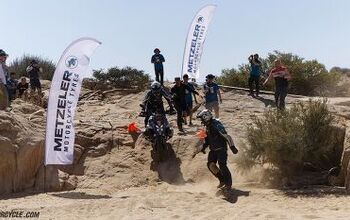


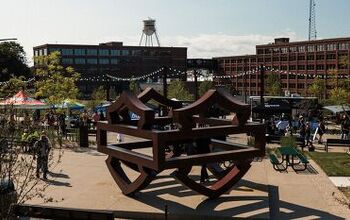

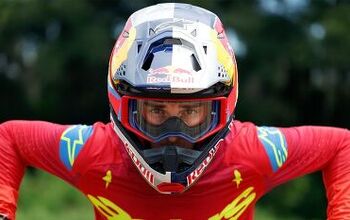

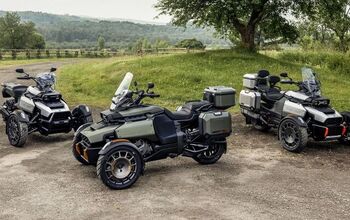
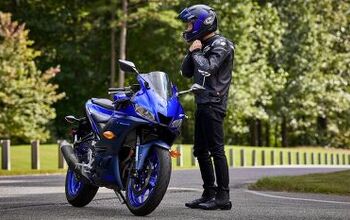









Comments
Join the conversation
Seems like good technology to increase safety but my concern is when do we get to a point where there is to much technology incorporated into bikes and cars. If a bike can brake for you when do we get to a point where the bike or car can prevent you from riding or driving? Another concern would be you're cruising down the highway at 70 mph and suddenly the bike applies the brakes, for a legitimate reason, and because you weren't prepared for the bike to brake your body is thrown forward like you were driving a car without a seat belt and you hit something? Just a few things to consider besides safety.